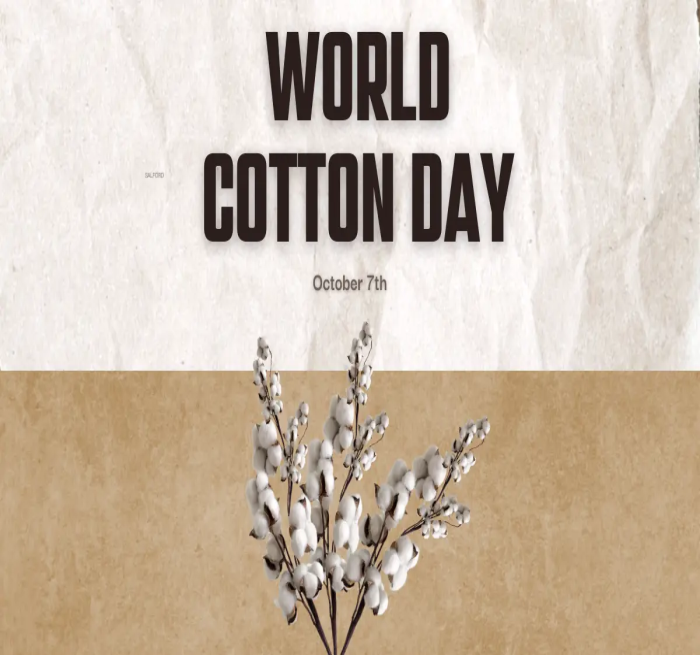India Celebrates World Cotton Day, Focus on Productivity
Why in the news?
- The Ministry of Textiles marked World Cotton Day 2024 with a focus on enhancing cotton productivity and sustainability.
- The event highlighted innovative farming practices, industry collaborations, and the promotion of Indian Kasturi Cotton to achieve the target of a $350 billion textile ecosystem by 2030.
World Cotton Day 2024 Celebrations:
- The Ministry of Textiles, along with the Confederation of Indian Textile Industries (CITI) and Cotton Corporation of India, hosted the World Cotton Day 2024 conference on the theme “Megatrends Shaping Cotton Textile Value Chain.”
- Union Textiles Minister, Shri Giriraj Singh, highlighted the government’s aim to achieve a $350 billion textile ecosystem by 2030, stressing the importance of adopting best farming practices to increase cotton yield.
Key Insights on Cotton Productivity and Challenges
- Adoption of practices like high-density planting and drip fertigation could raise cotton yields to 1500 kg per hectare, up from the current national average of 450 kg.
- Weed management and challenges in black soil regions were discussed, with emphasis on exploring new seed varieties and technologies like HT BT to reduce labour costs and improve yields.
Collaborative Efforts and Industry Initiatives
- Textiles Secretary Smt. Rachna Shah urged collaboration to address cotton productivity, emphasising that India ranks 35th in global cotton yield.
- Several Memoranda of Understanding (MoUs) were signed to promote the Indian Kasturi Cotton brand, with exhibits showcasing sustainable cotton products, recycled textiles, and handloom items.
Historical Context and Global Significance of Cotton
- World Cotton Day Origins: Initiated by the “Cotton Four” nations (Burkina Faso, Benin, Chad, and Mali) in collaboration with other African nations. First celebrated on October 7, 2019, in
- Industrial Revolution Influence: Cotton became a crucial commodity during Britain’s Industrial Revolution, significantly impacting global trade and the economy.
- Cotton and Sustainable Development: Supports the UN Sustainable Development Goals with initiatives from WTO, UNCTAD, ICAC, and ITC focused on sustainable cotton production and by-products.
Objectives and Impact of World Cotton Day:
- Awareness and Support: Aims to disseminate knowledge, support cotton farmers, and highlight challenges in the cotton sector, especially for low-income countries.
- Sustainability Focus: Promotes better production methods, environmental practices, and improved quality of life for cotton-dependent communities.
- Collaborative Efforts: Encourages international cooperation to enhance cotton-related development, improve nutrition, and renew commitments to sustainability.
Cotton Fabric Varieties:
- Chambray: Lightweight, breathable, durable, used in summer clothing and home décor.
- Muslin: Ultra-fine, soft, ideal for infant clothing.
- Terry Cloth: Highly absorbent, used in bathroom textiles.
- Sateen: Luxurious, soft, silky, popular for bedding.
- Denim: Durable, iconic fabric used in casual wear.
- Corduroy: Ridged, warm, versatile for clothing.
Sources Referred:
PIB, The Hindu, Indian Express, Hindustan Times




